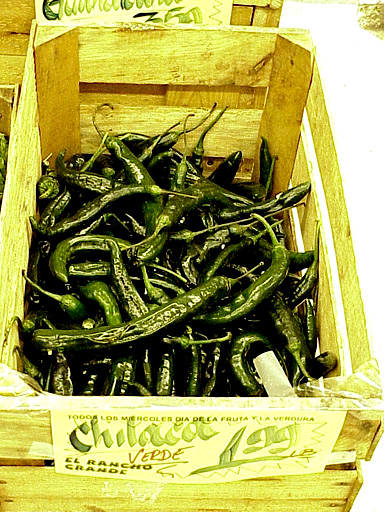
The Minority?
by Amber Blumgren

On Friday February 8th my designated group and I walked up Central, starting at Broadway and then went north a half a mile documenting every operating business in our path. It was an interview with one of these business owners which stirred the central theme for the following report. After some contemplation the decision to protect the anonymity of the person has been reached (in fear of possible racial retaliation) and only a description of the discussion will be given.
By the time our group arrived at the ‘spoken of’ location the business owners for the most part had been enthusiastic and positive about changes as well as the future of their neighborhood. These business owners were clearly Mexican by majority and their enthusiasm appeared to stem from the fact that they are a part of a "group of people living in a new territory but retaining ties with their parent state" and they are proud of their success (Webster’s definition; colonization). Obviously this afternoon walk up Central did not make us experts by any means, but the brightly painted buildings, street side vendors, and other characteristics of Mexico were colorfully apparent. Areas like this one in South Phoenix could be trying to retain local status through their styles similar to how early rapper and graffiti artist Fab Five Freddy describes the identity of hip hop, "You make a new style. That’s what life on the street is all about. What’s at stake is honor and position on the street. That’s what makes it so important, that’s what makes it feel so good-that pressure on you to be the best. Or to try to be the best. To develop a style nobody can deal with" (Rose, p. 436).
The whole mood changed when we walked into the 15 year old white family owned business on our focused course. The enthusiasm became hostility and the feelings on change became negative. This woman’s remarks remind me of Yolanda Ward’s article, "Spatial Deconcentration". Her argument was comparable to that of Bernard Weissbourd ("strategist" late 1960’s) who wrote papers pertaining to the so-called "crisis of exploding inner-city populations" (Ward, p. 4). This woman clearly feels that she and her family were there first and it is not right that the neighborhood has reached the point where language barriers have become a daily struggle. Her following dialogue correlated with one of Weissbourd’s proposed strategies in which she fears that "minority populations represented such a growing political threat by their growing numbers" and that "a strategy must be quickly developed to thin out their numbers and prevent" them from continuing to overwhelm South Phoenix (Ward, p. 4). Her prime complaint was that the government claims to helping the minority meanwhile she feels that it ought to be clear for anyone to see that "she" (Caucasian) is the minority and she and her family are getting the shaft.
On our brief walk we were able to witness the divisions in the community as explained by Jean Franco in, "NYC is a Third-World City". There were those "who want to rip off their own experience and sell it on the market", those "who try to bridge their ephemerality of rap and graffiti (among other cultural distinctiveness) in order to gain recognition not for themselves but for their communities", those "who refuse even to make the transaction, preferring to go with the flow", and those such as the above woman who resist change and strongly opposes gentrification (Franco, p. 19).